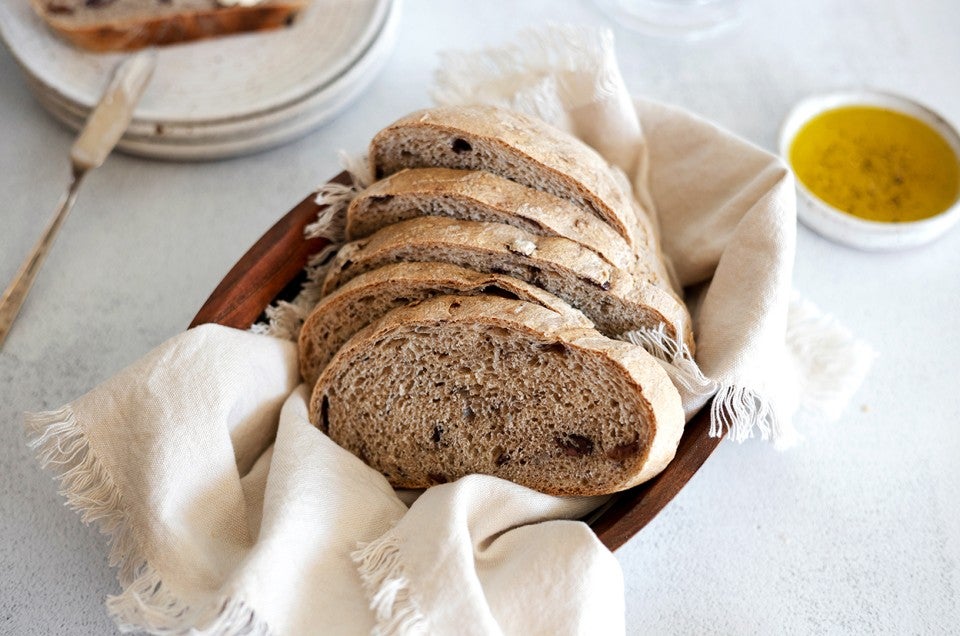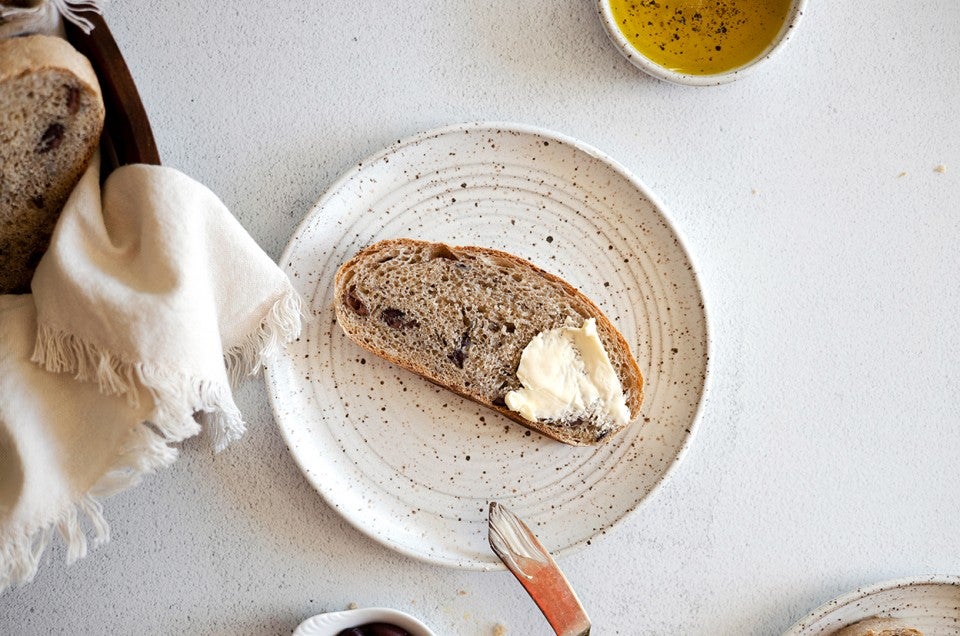Greek Olive and Onion Bread
Many Greek breads are associated with specific religious holidays: the most famous of these are Tsoureki, a golden braid enclosing colorful dyed hard-boiled eggs, at Easter; and citrus and spice Christopsomo, at Christmas. Elioti, an olive-studded loaf, was originally a Lenten bread, but is now commonly available year-round. The following is our take on that classic.
This savory bread is softer than a typical hearth loaf, though it's quite chewy. Serve it plain; toasted and drizzled with olive oil; or sliced for sandwiches (turkey, lettuce and tomato is a favorite).



















